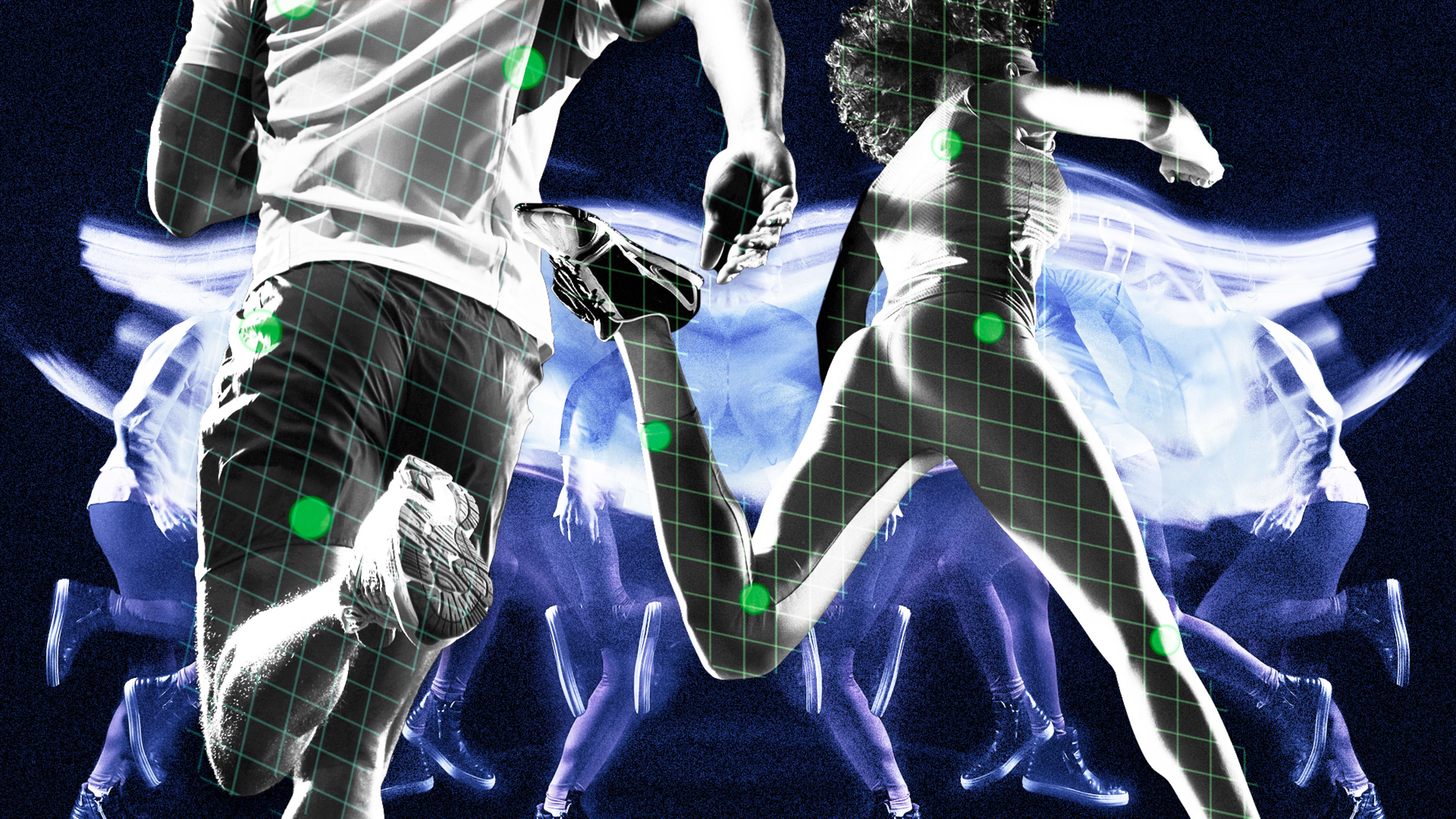This article was produced in partnership with SportTechie, the leader in sports technology innovation insights and consulting.
In the not-too-distant future, you’ll be able to walk into a Niketown store, buy a Tiger Woods-branded golf shirt and, when lining up your shot on the fairway, hear Woods’s voice gently suggesting a change in technique—say, a longer pause at the top of a long-iron shot.
That’s the vision of Steven Webster, the 46-year-old cofounder and CEO of Asensei, a San Francisco-based startup that wants to turn your clothes into a personal coach. Forget smartwatches such as Fitbit, which merely track your steps or monitor your heart rate. Thanks to a new generation of sensors that can be woven into fabric, smart apparel can precisely analyze the way you run—or critique your golf swing—using the same motion capture technology that is used in Hollywood.

Asensei’s first product was a Connected Rowing Coaching app that relies on the telemetry of a Concept2 erg machine. The app ingests stroke and force data to give users video and audio feedback on proper form and pace. Mount a smartphone on the rowing machine, pop in earbuds, and the AI coach will offer corrections, cueing you on technique (“arms away”) and intent (“your form and endurance are improving”).
Other brands are taking notice. Asensei recently announced a partnership with TRX, a popular resistance-band training program that is often taught at gym chains such as Equinox and Planet Fitness. The only problem with TRX is that not everyone knows the proper form for squats, lunges, and other body-movement exercises. Asensei plans to step in with wearable technology that can provide real-time feedback. If you’re bending at the wrong angle, Asensei’s so-called “smart (app)arel”—black compression shirts and pants, with five inertial sensors in each—will know.
At $349 a pair, Asensei’s smart (app)arel won’t be cheap when it begins shipping next month. But Webster believes the market for the technology is virtually unlimited. “Any sport where posture and technique and timing and form are important are sports that we can work with,” he says. The company has yoga and strength training programs in development, and it’s discussing other sports with potential partners.
Asensei isn’t the only player competing in the sports tech space. Competitors such as Simi, Dari Motion, and Physimax, which rely on optical tracking, are increasingly popular with coaches, trainers, and elite teams. But camera technology isn’t practical over large spaces—think golf courses or baseball outfields—and it isn’t cost-effective for high schools or even large pro training complexes. Smart apparel can cover such technological “blind spots,” and the market is growing fast.
Of course, the smart apparel industry is getting crowded too. Athos, Hexoskin, and Myant (a CES 2020 Innovation Award winner) are marketing products that can track ECG, EMG, and sweat and stress levels, in addition to movement. Wearable X, a Fast Company Most Innovative Company honoree, sells yoga pants that gently vibrate when a yogi is out of position and hum “ohm” when the body angles are correct.
And while the smart apparel category is exploding, it’s still a tough product type to get right. “Hardware” is something of a misnomer for a stretchy, sweat-wicking fabric that’s clinging to your skin. It’s not enough to provide athletes a smarter alternative to their trusty Fitbit or heart-rate strap. It also has to be more comfortable.
One of Asensei’s biggest rivals is likely to be Athos, a Redwood City-based startup with financial backing from billionaire venture capitalist Chamath Palihapitiya. After launching in 2014, Athos pivoted to serving elite athletes and the military in 2017, and now outfits more than 40 professional and Division I teams, including the Philadelphia Phillies (MLB), the Los Angeles Clippers (NBA), FC Dallas (MLS), and Ohio State (NCAA). Athos’s EMG sensors capture muscle behavior in real time and transmit data to a mobile device via Bluetooth. Conveniently, for people who tend to get sweaty, the sensor-laden clothes are fully machine washable.
Athos provides metrics such as left-right balance, muscle contribution (quads versus hamstrings, for instance), and muscle activation, which can show their sequencing during exercise. That’s essential to achieving proper biomechanics—that is, the most efficient and productive movement pattern. Training recommendations and fitness guidance from pro teams helped Athos validate its efficacy and venture back into the so-called prosumer market of highly motivated amateurs seeking a professional experience.
“We now believe we have built the base technology that will enable every single person who goes to the gym to have a personal trainer when they’re working out,” says Athos cofounder Dhananja Jayalath. “Our vision has always been that clothing is going to evolve into something that is more than what you use to cover your body, that it’s going to start adding value to you beyond just privacy.”
Webster has his work cut out for him, but he’s also looking at the bigger picture. Just as Peloton generates recurring revenue by selling subscriptions to streaming video classes, Webster envisions a world in which smart apparel could serve as a technology platform for content creators.
“I live in a future where smart apparel is cheaper than regular apparel—not more expensive,” says Webster. “When the lifetime value of a customer isn’t on the margin of the apparel but is on the services that you can deliver beyond the initial transaction—when we can deliver coaching from your favorite athletes and coaches—the business models become really interesting.”
That, however, requires educating consumers on both a new problem and its solution. In other words, the upside of getting those 10,000 steps is diminished if you’re not taking them the right way. “The ecosystem that we believed would exist,” Webster says, “we’ve been willing it into existence.”
Question? Comment? Story idea? Let us know at talkback@sporttechie.com.
Recognize your brand’s excellence by applying to this year’s Brands That Matter Awards before the early-rate deadline, May 3.
